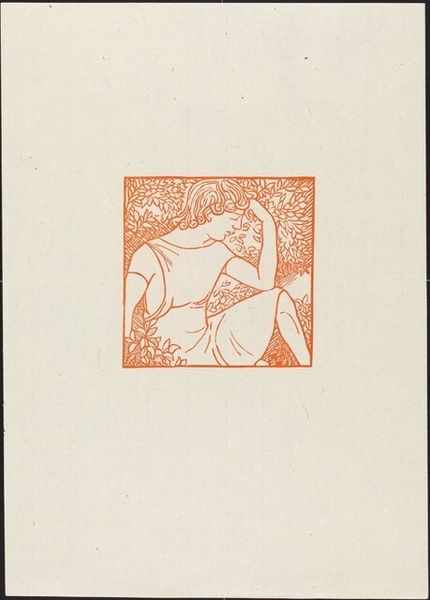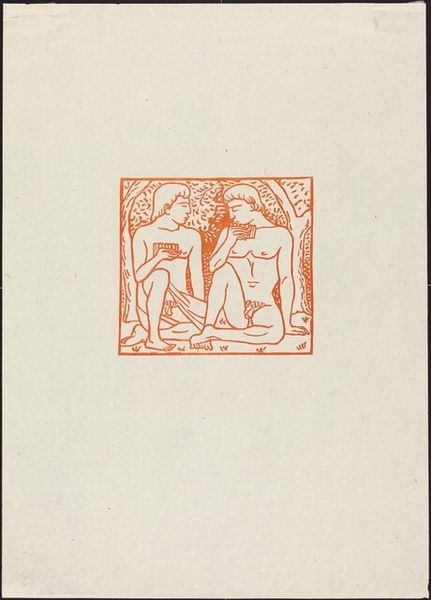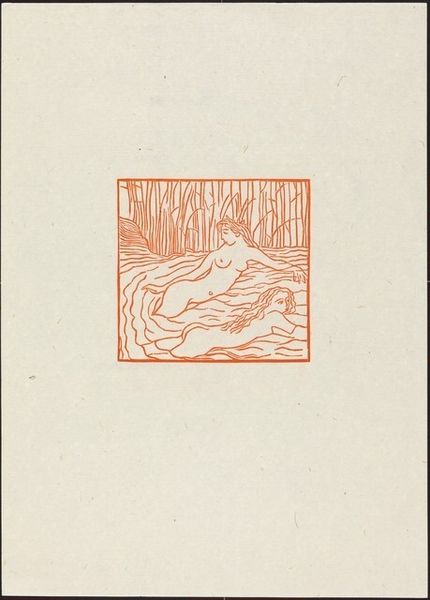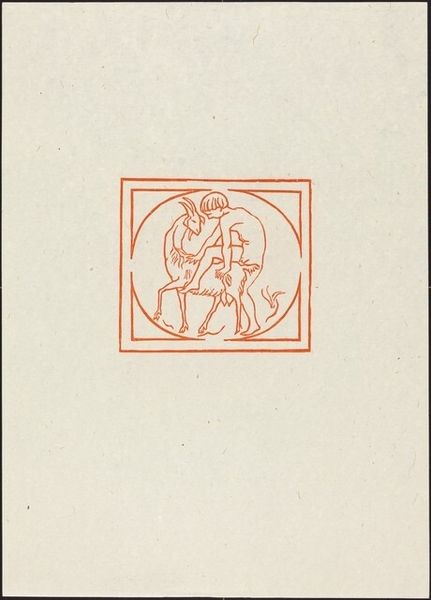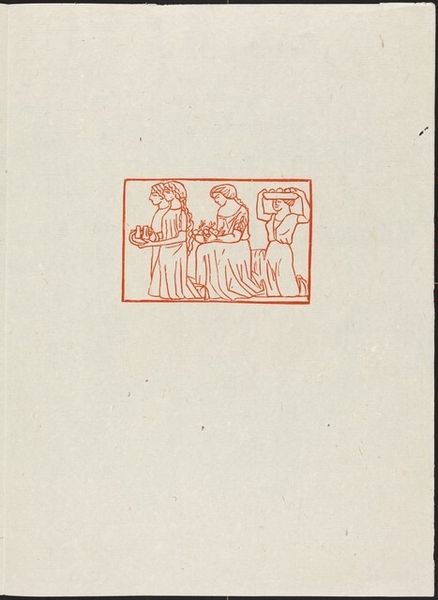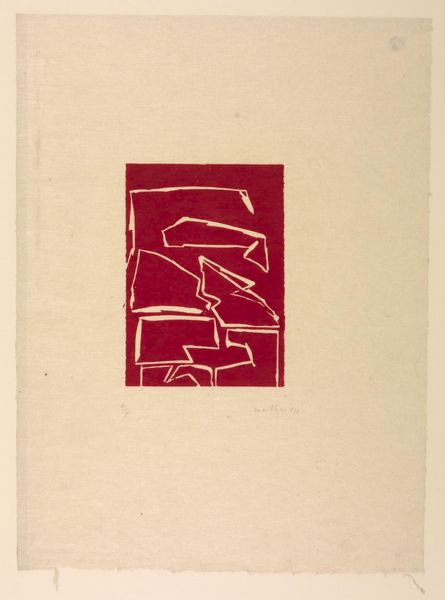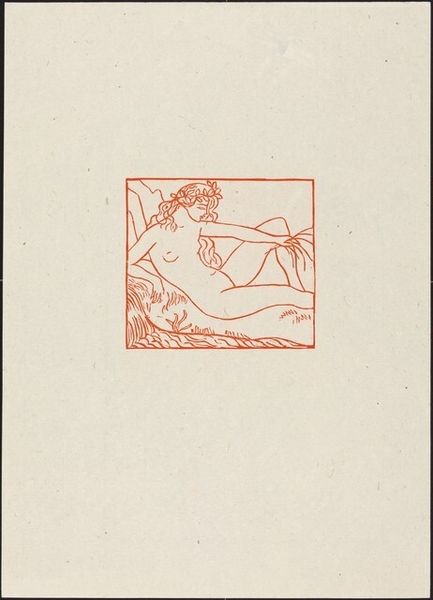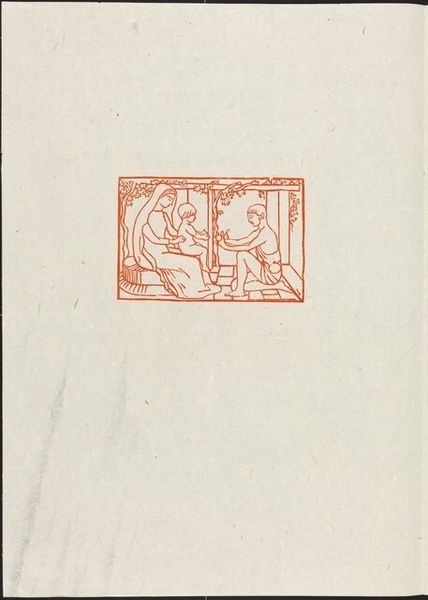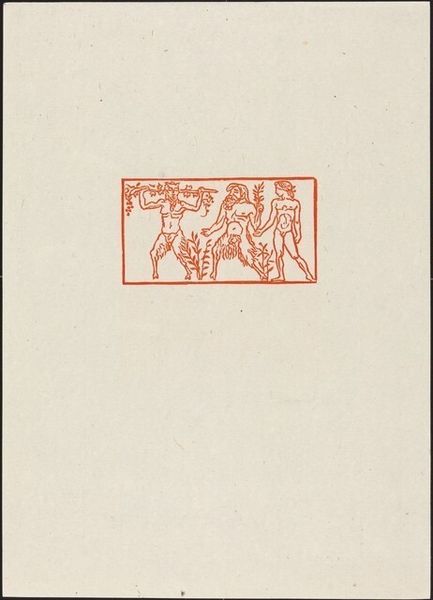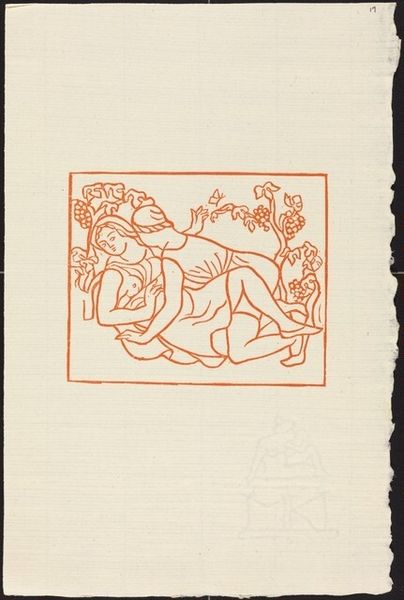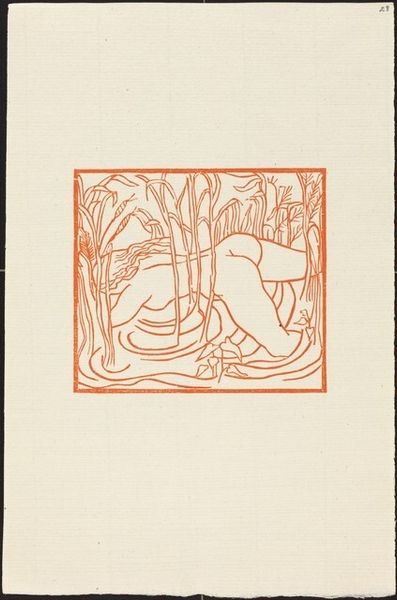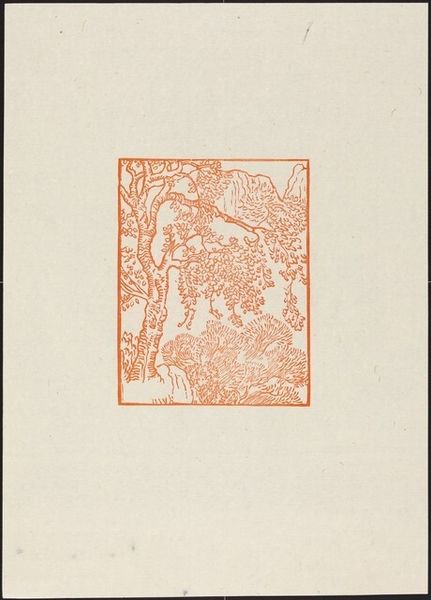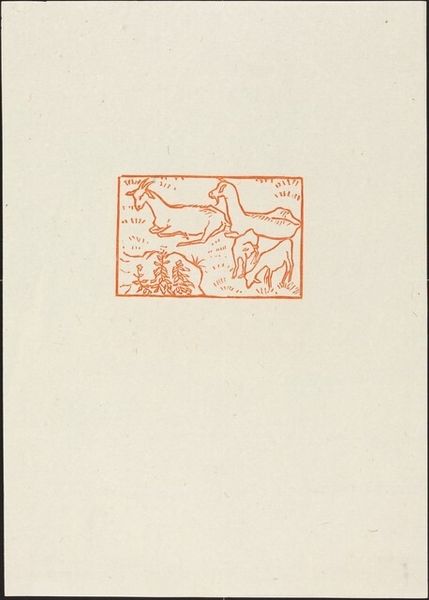
Sixth Eclogue: Hylas Left by a Stream (Hylas disparu dans une fontaine) Possibly 1926
0:00
0:00
Copyright: National Gallery of Art: CC0 1.0
Curator: What strikes me immediately is the rhythmic stillness of this linocut print, possibly from 1926, by Aristide Maillol. The title is Sixth Eclogue: Hylas Left by a Stream. There is an immediate ancient aura to it. Editor: Absolutely. It's simultaneously dynamic and meditative, that rust-colored line snakes and flows almost like liquid heat around a figure who seems profoundly saddened, closed off somehow. Is he turning to stone, perhaps? Curator: The legend of Hylas does involve transformation and loss. He was a beautiful youth, Heracles’ companion. He went to fetch water from a spring, and the nymphs, captivated by his beauty, pulled him into the depths. Never to be seen again. Editor: See, turning to stone! Or water, same thing, in that grief becomes a landscape, a drowning. Look at those lines—they aren't just water, are they? They’re the reaching tendrils of something else…loss itself. They are like emotional aftershocks or echoing wails that seem to consume the poor lad! Curator: Exactly! Maillol captures that sense of mythic inevitability, using the linocut's graphic quality to suggest something both sensual and tragic. There is this strong sense of timeless sorrow that emanates from the image. Consider that Maillol was deeply influenced by classical sculpture. Editor: Yes! And like ancient sculptures, it is charged with echoes of the past, the rise and fall of civilisations, the eternal cycle of beauty and destruction. I like the simplification too; just figure and water distilled to pure essence with bold simplicity that gets right to the emotional core. Curator: It distills the themes of longing, of youthful beauty meeting its tragic fate and becoming eternally embedded in the natural world, it creates an almost palpable symbolic intensity. Editor: I suppose that even centuries later, what’s more devastating and awe-inspiring than that? Curator: I completely agree. Maillol managed to take a classical narrative and imbue it with an enduring human vulnerability, creating a symbol for love and death and everything in between.
Comments
No comments
Be the first to comment and join the conversation on the ultimate creative platform.
